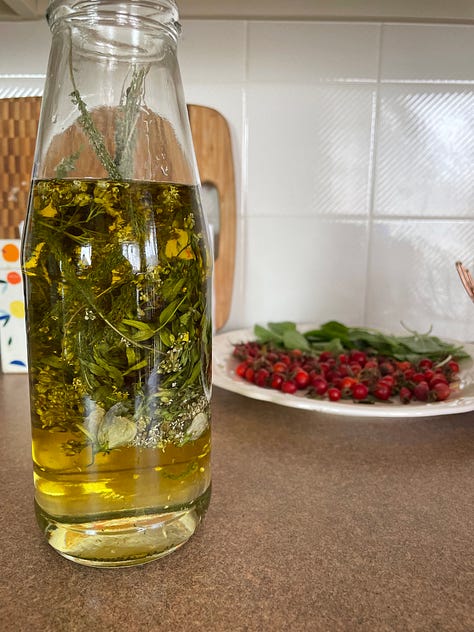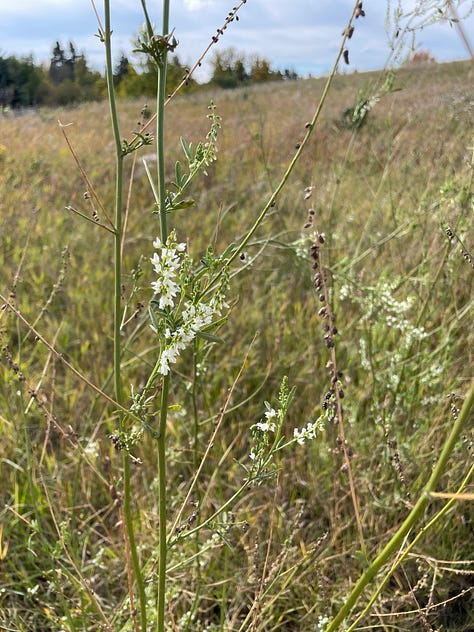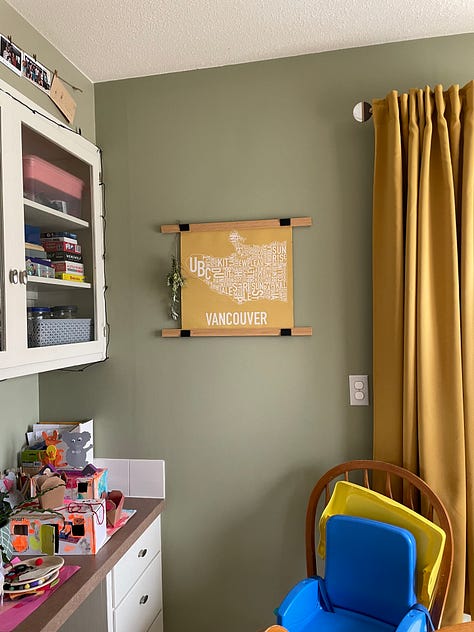Becoming Indigenous to Place
Perhaps we don't need a "look but don't touch" approach to living in the world
Good morning, friends and readers,
My family and I just came back from a walk around a beautiful, wild trail surrounding a lake in our town. We actually haven’t been since before Sage was born even though it’s literally a 5 minute drive away, and today has been the most picturesque fall day, so we got our reusable Starbucks cups filled with decaf pumpkin spice lattes (I will not apologize for loving them) and headed over.
As we walked, Jason and I were observing the plants and trees that surrounded us: paper birch, rose bushes, wild grasses, pines, spruces, mountain ash, plantains, dandelions, and so much more that we couldn’t even identify. Declan pretended to be a wild Grovyle, which I love because it’s a forest-defending Pokémon, and Sage started to enjoy the freedom to run when she realized we would go at her pace and not leave her behind. The beautiful thing about this area is that it has a trail that’s maintained, but other than that, it’s mostly untouched. So we looked out for some plants we could harvest: Jason looked for rosehips and I looked for plantain leaves.
We have spent our marriage growing in our knowledge of sustainable living, becoming more skilled at making for ourselves the things that we need, and learning to live off the land around us, but I definitely have held the motto of “Take only pictures, leave only footprints” when it comes to spending time in wild places. If everyone goes out to the forest and starts harvesting what’s there, then soon there won’t be a forest! In my very colonial mindset, the only options are to not touch and let the wild live, or take more than we need and risk losing it.
I’ve been reading Braiding Sweetgrass by Robin Wall Kimmerer, and I feel like every chapter gently unfolds a new way of being in me that I’ve never experienced before, one that feels more beautiful, more whole, more connected. In the chapter I just read, she describes the relationship between people and the plants and animals that sustain us as being reciprocal, and that following the guidelines of the honourable harvest actually benefits all parties involved.
She told the story of how one of her students studied what would happen to sweetgrass in three different areas: one section that was left alone, one section that was harvested by trimming half the leaves from each plant, and the last section that was harvested by pulling up half the clumps. This student flagged each and every leaf for two years, even while pregnant, to compare whether the sweetgrass population in each section would grow or decline. What she found was that the section where no one harvested actually declined in population, and both sections where no more than half was harvested each season actually had more sweetgrass than at the start.
This chapter felt like permission for me to learn what it means to go out and harvest what’s been given to us with honour. And today, I felt such a shift in my presence to the world around me as I wondered what gift each plant held for us if only I could see it. I learned the names of two new plants, sweet clover and cotoneaster, that I had seen before but never asked what they were. I was curious about the healing properties of all I came across, or in some cases the toxicity. I wondered what foods the animals were eating, and could I also eat that? I was seeing this space with new eyes because I now knew that I could interact with these beings in a way that created a reciprocal relationship, beneficial to myself as well as the balance of the forest.
Jason filled his empty latte cup with rosehips; he will dry them and make herbal sodas for our fermentation business (mmmm rosehip lemonade). I filled my pocket with plantain leaves, sweet clover, and a couple sprigs of sage; I will dry them, infuse them into oil, and add that oil to my healing balms that I use on my hands, feet, face at night, and my baby’s bum (I’m sharing the recipe in the next monthly mashup).



From each plant we visited we never took more than half, although we did not ask permission; I’m not sure yet what that authentically looks like for me. Regardless, I feel like today deepened my relationship with creation, increased the love I feel for this place that I find myself. Robin describes this process as becoming indigenous to place. As a descendent of colonialists who finds so much beauty in the teachings of Indigenous cultures, I think I might take on that description—Aleesha, the woman who is becoming indigenous to her place in the world.
This journey is as much about me as it is about my children. I desperately want to leave a different legacy than the one I’ve been handed; rather than constantly seeing the world through the lens of scarcity and tying status to the amount of stuff one has, I hope my children find abundance in the world around them and the ability to rest in their inherent enoughness.
But…
It’s easy to speak of the importance of these things, and still forget to live in the truth of it. And my children are seeing what I’m doing more than they are hearing what I’m saying (children have always been able to pick up on the BS of the old parenting phrase “Do as I say, not as I do”).
I wonder if it sometimes feels easier to try to instruct my children with my words than show them with my life, because the second option requires me to pause long enough to reflect on what areas need to change in order for my actions to line up with my values. Maybe it doesn’t feel good enough to just change myself and hope they learn from that. Or perhaps it even feels selfish to focus on myself in that way.
A phrase that I keep coming back to over the years is “You can’t give away something you don’t have.” If there’s something I think is important for my children to know and practice, then I better be willing to show up and do the work first. Because what’s good for them must also be good for me.
How do you connect to creation, whether that’s in your yard, your community, or abroad?
What practices bring you a sense of being Indigenous to your place in the world?
What elements of the natural world do you know little about, but are curious to learn more?









I find myself deeply connecting with Indigenous wisdom as well. I'm slowly working on cultivating variety in our gardens at home so that we can harvest some of our own food, herbs, and flowers. It's a slow process here at the beginning but I'm looking forward to being able to sharing that experience with my kids.